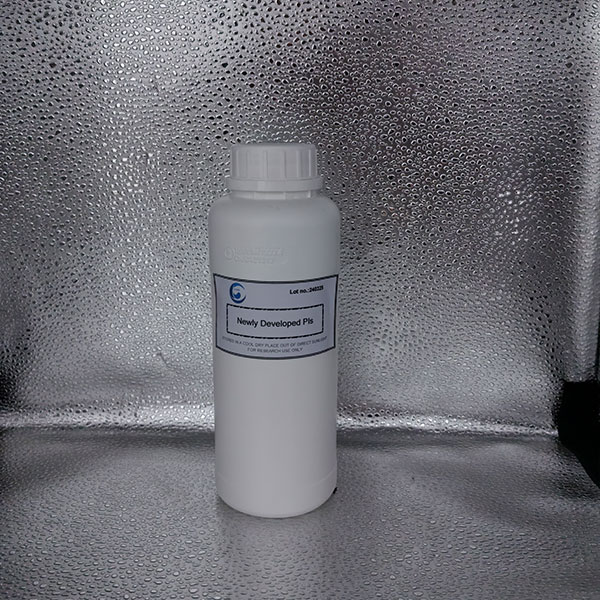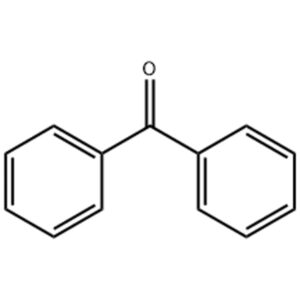Beschreibung
Photoinitiator LAP / Lithiumphenyl-2,4,6-trimethylbenzoylphosphinat CAS 85073-19-4
Synonym: Lithiumphenyl-2,4,6-trimethylbenzoylphosphinat
CAS-Nr.: 85073-19-4
Molekulare Formel: C16H18LiO3P
Allgemeine Informationen:
LAP ist ein wasserlöslicher Blaulicht-Photoinitiator, der die Aushärtung lichtempfindlicher Hydrogelmaterialien oder Biotinten unter Einwirkung von blauem Licht (Wellenlänge 405 nm) schnell einleiten kann.
LAP wird durch 405 nm blaues Licht photovernetzt und ist aufgrund seiner besseren Zellverträglichkeit im Allgemeinen 2959 überlegen.
Spezifikation:
| Erscheinungsbild | Weißes Pulver |
| Reinheit | ≥98.5% |
| Absorptionsspitze | 371nm |
| Flüchtiger Inhalt | ≤0,5% |
Verwendung:
Der wasserbasierte Photopolymer-3D-Druck ist keine einfache Technologie. Er unterscheidet sich stark vom herkömmlichen 3D-Druck. Während der herkömmliche 3D-Druck bei der Materialverarbeitung und der Formgenauigkeit oft an Grenzen stößt, kann der wasserbasierte Photopolymer-3D-Druck mit Hilfe der magischen Kraft des Photoinitiators LAP detailliertere und komplexere Strukturen erzeugen. Dabei handelt es sich um ein komplexes photochemisches Reaktionsprinzip. Bei Bestrahlung mit Licht einer bestimmten Wellenlänge kann der Fotoinitiator LAP schnell eine Polymerisationsreaktion in der wasserbasierten Fotopolymer-Tinte auslösen, wodurch das Druckmaterial schnell von einem flüssigen in einen festen Zustand übergeht und sich präzise zu einem entworfenen dreidimensionalen Modell anreichert.
Im biologischen Bereich ist der 3D-Druck von lebenden Organismen mit Zellen eine revolutionäre Technologie. Stellen Sie sich vor, dass Wissenschaftler in der medizinischen Forschung versuchen, beschädigtes menschliches Gewebe oder Organe zu reparieren. Früher war dies ein unerreichbarer Traum, aber der 3D-Druck von lebenden Organismen mit Zellen macht dies möglich. Der Fotoinitiator LAP fungiert in diesem Prozess als Dirigent, der die Bindung und Formung des wasserbasierten fotohärtenden Materials und der Zellen steuert, so wie man eine exquisite Symphonie des Lebens dirigiert. So haben Wissenschaftler in einigen experimentellen Fällen der Hautgewebereparatur mit Hilfe der zellbeladenen Bioprinting-Technologie erfolgreich physiologisch aktives Hautgewebe geschaffen, was für Brandopfer ein Segen ist. Der Fotoinitiator LAP spielt bei diesem Verfahren eine wichtige Rolle. Er sorgt dafür, dass der Druckprozess sanft und präzise abläuft, die Zellen nicht beschädigt werden und günstige Bedingungen für das Überleben der Zellen und die anschließende Gewebefunktion geschaffen werden.
Langwellige lichthärtende Beschichtungen auf Wasserbasis haben auch in der Industrie und im dekorativen Bereich breite Anwendungsmöglichkeiten. Historisch gesehen hat sich die Beschichtungstechnologie ständig weiterentwickelt, von der einfachen Anwendung von Pigmenten in den Anfängen bis hin zu den High-Tech-Beschichtungen von heute. Die langwelligen wasserbasierten lichthärtenden Beschichtungen sind die Newcomer in der Familie der Beschichtungen. In praktischen Anwendungen, z. B. in der Automobilindustrie, können langwellige wasserbasierte lichthärtende Beschichtungen die Härte und Verschleißfestigkeit der Beschichtung verbessern und gleichzeitig den Umweltschutz gewährleisten. Der Fotoinitiator LAP macht sich dabei die Eigenschaften von langwelligem Licht zunutze und macht den Härtungsprozess der Beschichtung stabiler und effizienter. Nach neuesten Forschungsergebnissen ist die Korrosionsbeständigkeit dieser Art von Beschichtung nach der Aushärtung etwa 30% höher als die herkömmlicher Beschichtungen, was zweifellos einen zuverlässigeren Schutz für Produkte wie Autos bietet, die lange Zeit komplexen Umgebungen ausgesetzt sind.
| Photohärtbarer 3D-Druck auf Wasserbasis | Photohärtende Tinten auf Wasserbasis |
| Zellhaltiger Bio-3d-Druck. | Aushärtung von zellhaltigem Hydrogel |
| Langwellige photohärtbare Beschichtungen auf Wasserbasis | |
Empfohlene Dosierung: 0.1-5% (w/w)
Paket:
1kg/Sack
Lagerung:
An einem kühlen, trockenen Ort ohne direkte Sonneneinstrahlung aufbewahren.
Vermeiden Sie Licht- und Hitzeeinwirkung.
Schutz des Produkts vor Auslaufen, Regen und Sonneneinstrahlung während des Transports.
Kontaktieren Sie uns jetzt!
Wenn Sie einen Preis benötigen, tragen Sie bitte Ihre Kontaktdaten in das unten stehende Formular ein. Wir werden uns in der Regel innerhalb von 24 Stunden mit Ihnen in Verbindung setzen. Sie können mir auch mailen info@longchangchemical.com während der Geschäftszeiten ( 8:30 bis 18:00 Uhr UTC+8 Mo.~Sa. ) oder nutzen Sie den Live-Chat auf der Website, um eine schnelle Antwort zu erhalten.






Bewertungen
Es sind noch keine Bewertungen vorhanden.